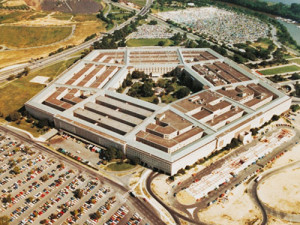Pentagon staff size takes more flack from experts
Former Pentagon officials told lawmakers that the Defense Department's oversized workforce is not only hurting the budget, but also policy decisions.
Former Pentagon officials are telling Congress that the Defense Department needs to seriously downsize its staff to improve policy, planning performance and budget.
Speaking as part of a series of hearings aimed at reforming DoD, former department officials said a wide duplication of efforts exists among staff in the Pentagon, especially in the policy realm.
The policy building system, which consists of the Office of the Secretary of Defense (OSD), the Joint Staff and the combatant commands, is diluting policy to the common denominator, said Michele Flournoy, former DoD undersecretary for policy during a Dec. 8 Senate Armed Services Committee hearing.
“This over-emphasis on jointness in policy actually undermines the department’s ability to respond quickly and effectively and strategically to some of the challenges we face,” she said.
Flournoy called the lack of policy decisiveness a “tyranny of consensus.”
Flournoy said that is exacerbated by a lack of clarity in roles between the three entities. The murkiness creates situations where the Joint Staff or the combatant commands will have more policy staff than the OSD policy office, which has the policy lead.
Instead of focusing on their own respective silos, each entity has hired a staff to do the job of the other two leadership branches.
The Joint Staff has burgeoned to more than 4,000 employees, OSD to 5,000 and the combatant commands have grown to more than 38,000, Flournoy said.
They “are ripe for a real scrub in terms of the breadth of their functions and the level of duplication with the joint staff and with OSD,” she said.
The experts testifying, which included former Undersecretary for Intelligence Michael Vickers and former presidential National Security Advisor Commander Jeffrey Eggers, echoed previous reform hearings calling for cuts to DoD’s bloated headquarters.
“Headquarters have continued to grow even though active duty military has shrunk,” Flournoy said. “In total, if you add in the defense agencies you have 240,000 people, excluding contractors, to a cost of $113 billion, it’s almost 20 percent of the DoD budget,” Flournoy said.
Arnold Punaro, a member of the Defense Business Board, told the committee last month that due to DoD infrastructure and staff growth the department is spending more now than it spent during the peak of President Ronald Reagan’s buildup of the military. However, war fighting forces are 40 percent to 50 percent smaller, Punaro said.
Punaro also noted that DoD is currently organized and operating under management models popular in the 1950s. Walker said far too many uniformed personnel are in civilian positions, which is driving up cost.
Flournoy said this causes DoD to be slower and more risk averse, prompting more menial decisions to be pushed up to leadership and ultimately creating a department without executive energy.
The Congressional Budget Office released a report earlier this month corroborating DoD’s headquarters problem.
The office estimated that DoD has 340,000 military members assigned to “commercial” or support jobs. Converting just 80,000 of those into civilian positions would trim DoD’s personnel costs by anywhere between $3.1 billion and $5.7 billion per year, analysts concluded.
Flournoy suggested classified meetings between OSD, Joint Staff, combatant commands and industry to give them a “safe space” when deciding how to deal with the staff issue.
Congress and DoD have tried to take some action on headquarters expansion.
The Defense authorization act has a provision to cut 25 percent of its workforce over the next five years. That will cut about $10 billion by 2018.
DoD saw the signs and directed the cut with or without a congressional requirement in September.
“We anticipate Congress will require a 25 percent reduction in the funding of DoD headquarters in lieu of the 20 percent requirement previously established by the department,” a September memo signed by Deputy Defense Secretary Bob Work stated. “Even if Congress fails to act, the department needs the savings that will be achieved through this reduction to fund higher priority requirements in support of the warfighter and to address underfunded strategic needs.”
Copyright © 2024 Federal News Network. All rights reserved. This website is not intended for users located within the European Economic Area.
Scott Maucione is a defense reporter for Federal News Network and reports on human capital, workforce and the Defense Department at-large.
Follow @smaucioneWFED





